When the warm months of summer finally arrive, we love spending time outside, enjoying meals al fresco, swimming in the ocean, hiking in the woods, napping in the grass. And we love gardens, whether we are lucky enough to have one of our own or spend time at one in our neighborhood or make a point to visit one on the other side of the globe. While the work we do as architects and interior designers in New York City is most often inside of doors, these spaces outside of doors are great sources of inspiration. From the wild and whimsical, to the meticulously manicured, and the monochromatic to brightly colored, gardens bring us joy, provide us spaces for reflection and relaxation, and keep us connected to nature. For our June post, we took a step outside and came up with a wonderful list of some of our favorite gardens, both near and far. Some, we have had the pleasure to visit, others, we dream of seeing some day. All, however, evoke in us feelings that only summer, with its birdsongs, fragrant flowers and glorious shades of green can bring.

Hangzhou Gardens
I visited the world-renowned Hangzhou Gardens in 2018 during a week-long visit to supervise the final installation of the Darphin Paris shop that we designed with Estee Lauder there. The expansive site is a collection of picturesque gardens that includes The West Lake, which is a UNESCO World Heritage Site. As you first take in the vistas, it’s impossible not to be overwhelmed by the beauty and solemnity of the garden’s rich history. The Hangzhou Gardens is a prime example of Chinese landscape design principles: harmony, balance and seamless integration with built structures. Being there felt serene, and I was at peace with the knowledge that I was the farthest from home that I have ever been.
-Robin Corsino
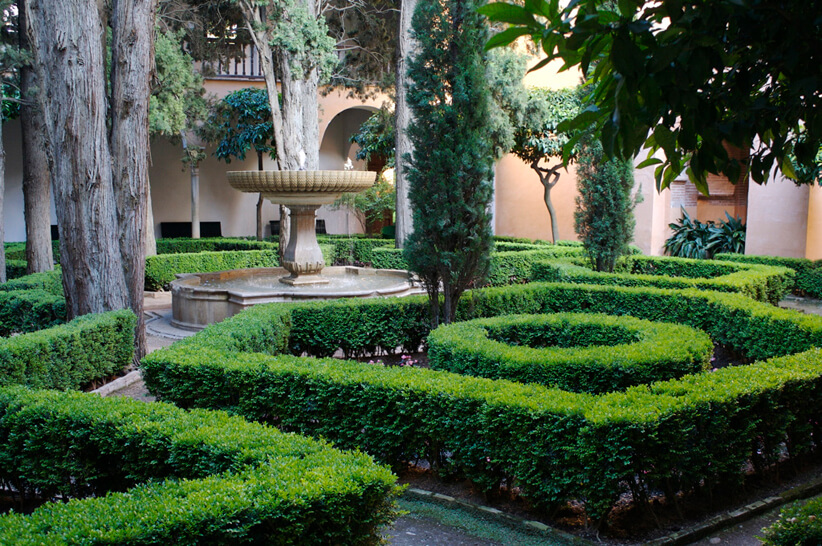
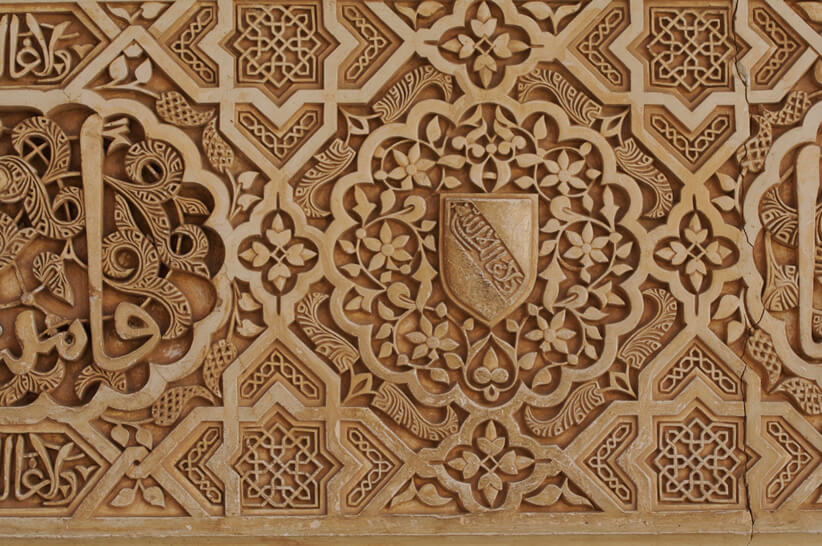
The Alhambra and The Generalife
The Alhambra in Granada, Spain is a palace and fortress complex which dates back to the 13th century and is an important monument to Islamic architecture. The grounds, both within and surrounding the complex, are filled with lush plantings, various species of trees, and sculpted hedges in geometric patterns that echo the motifs found in the intricate stucco work and tile mosaics that adorn the floors, walls and ceilings of the buildings. These are a testament to the Islamic influence on the design and layout of the Alhambra. Located adjacent to the palace is another complex called The Generalife, whose name possibly stems from the Arabic phrase “the garden of the architect.” It was a place of rest and retreat for the kings and includes a series of courtyards and patios with ornamental fountains, ponds and pools, and colorful plantings, meticulously designed to complement the surrounding structures. The use of water provides a sense of coolness and serenity and reflects the Moorish belief in its importance as a symbol of life and fertility. For me, the most striking feature of both the Alhambra and the Generalife, when I think back to my visit in the early 80s as a young architect and return to my memories of them, is the seamless integration of the natural landscape and planted gardens with the many layers of architectural styles, and the unity and harmony this integration creates. Image 703 and 601 by Nic’s events, licensed under CC BY-SA 2.0
-David Mann
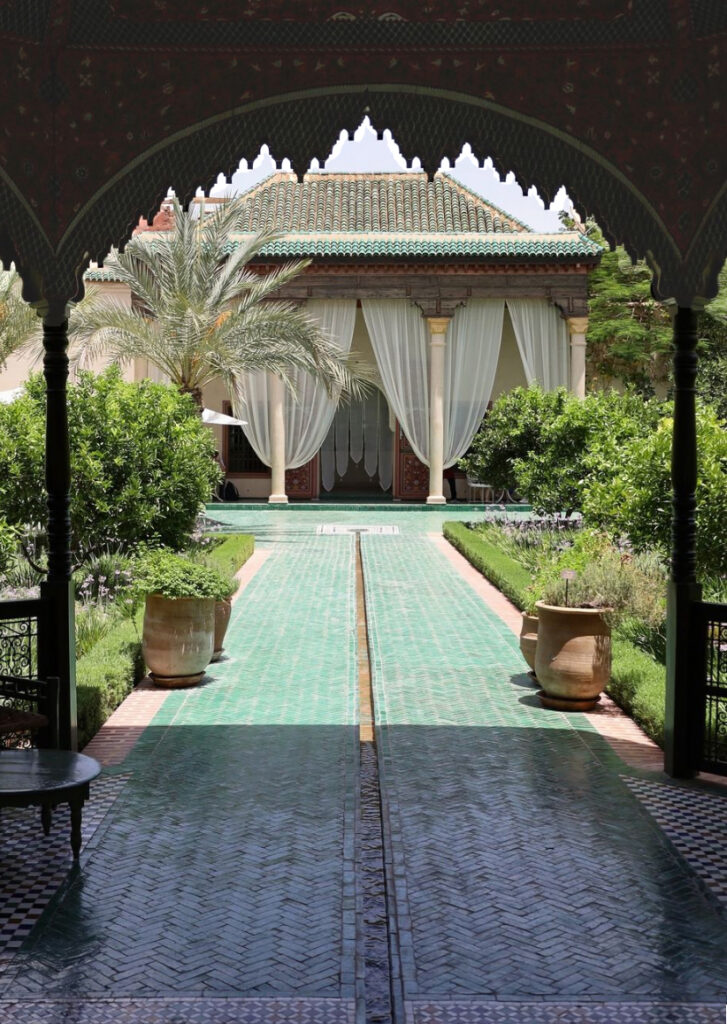
Amongst the beautiful chaos of the souks in the Marrakech Medina, there is a magical oasis known as Le Jardin Secret. The property has deep roots in local history that trace back 400 years when it was an extravagant palace. After being destroyed at the fall of the Saadian dynasty, it was rebuilt in the 19th century based on a design that stayed true to the original . In the years that followed, it housed many important local figures and eventually fell into a state of disrepair. After recent restorations of the ancient structures, the grounds are now open to the public and I was lucky enough to visit in the Spring of 2023.The buildings within Le Jardin Secret are wonderful examples of Islamic art and architecture and are surrounded by two green spaces: The Exotic Garden and The Islamic Garden. The Exotic Garden is filled with plants from all over the world, and the restored Islamic Garden, while rigid in its geometry, is tranquil and pays homage to the religion of the land. On my visit, I loved going to the gardens as a place of peaceful retreat, especially in the mornings where I would enjoy a cup of tea, taking in the fragrant scents and the lovely views from the terraces high above the city. Le Jardin Secret is a perfect example of why one of Marrakech’s many nicknames is, “A rose among the palm trees.
-Allison O’Connell
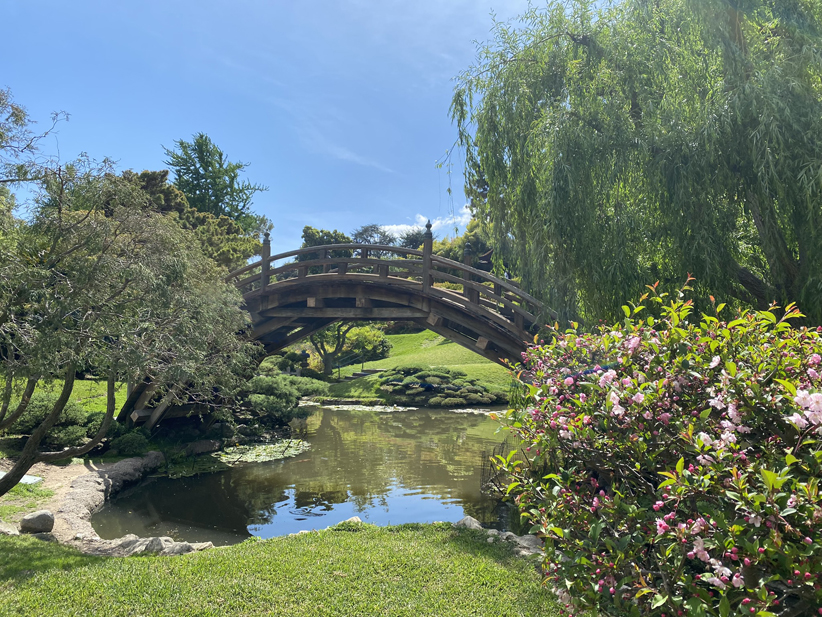
The Huntington Botanical Gardens
The Huntington Botanical Gardens in Los Angeles are a sprawling 130 acres of land that were founded in 1919 by Henry and Arabella Huntington and open to the public. I had a chance to visit in May of 2022. HBG has 16 themed gardens on its grounds which allows for an overwhelmingly beautiful and diverse experience. Of those, my favorites were the Japanese and Chinese Gardens, as they are both aesthetically pleasing green spaces, but also have buildings and architectural elements to experience and explore. The bonsai collection in the Japanese Gardens was especially impressive as the trees now number in the hundreds. Overall, it’s a very peaceful and introspective place to walk around and when you’re there, you’re surrounded by nature you might not otherwise get the chance to experience in person.
-Kim Frederick
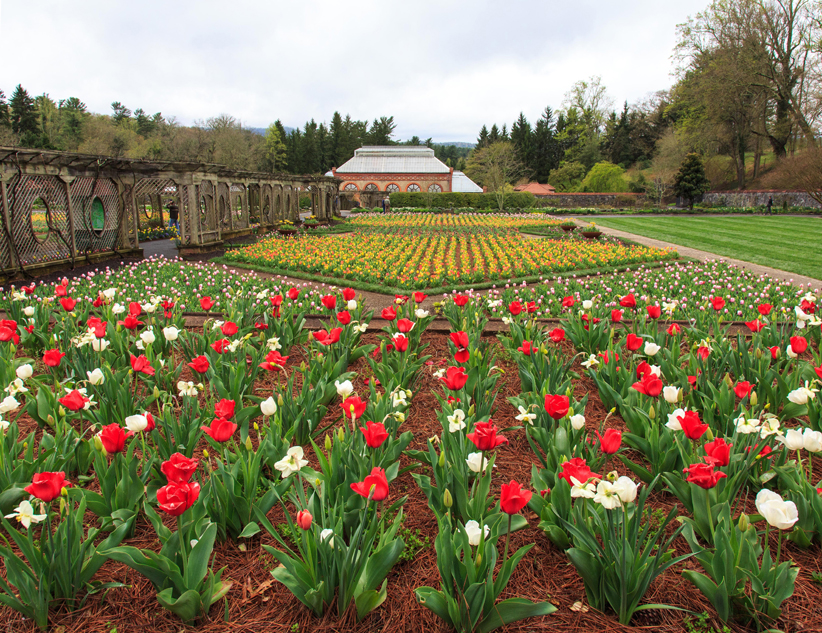
The Biltmore Estate in Asheville, North Carolina was home to George Vanderbilt, who in 1888 hired Frederick Law Olmsted to design the gardens which span 8,000 acres of indoor and outdoor spaces. The sprawling grounds include rose gardens, walled gardens, azalea gardens, and a large conservatory greenhouse full of exotic plants. I had a chance to visit over the holidays when the estate was decorated with Christmas lights and holiday decorations. Although they were not in bloom, the design and scale of the gardens was very impressive. I would love to go back in the springtime to see foliage at its peak. I frequent Olmsted’s famous Central Park and Prospect Park as sources of nature in New York City. It was special to see his work far away from home.
-Becca Brennan
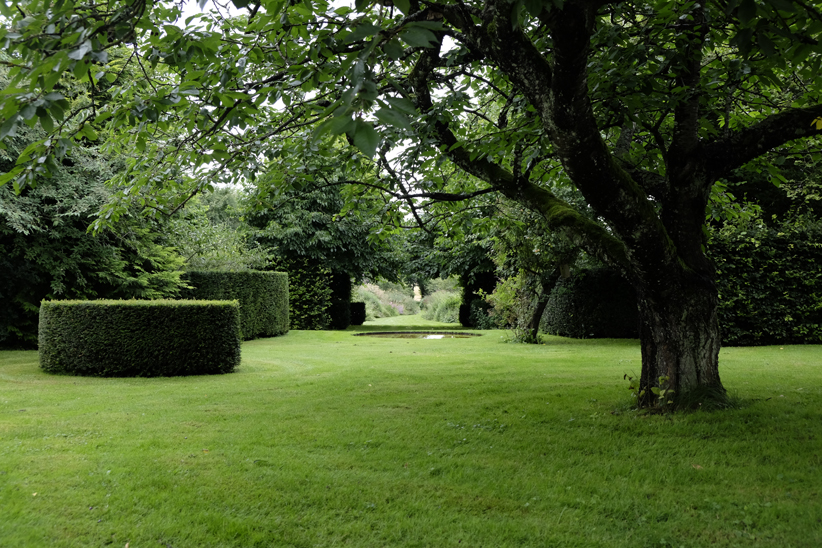
Ellipsehaverne (Ellipse Gardens)
I recently came across the work of Danish landscape architect Kjeld Slot and chose a garden from his portfolio, called Ellipsehaverne, which is a 7000 square meter garden located in Djursland, Denmark. It has been referred to as “an ongoing experiment with plants within a strong architectural frame.” The garden is a tribute to the classical form of the ellipse, designed to catch the changing seasons and light. While I have never visited it in person and likely never will, due to the fact that it’s private, I am drawn to the obvious beauty of its diverse gardens within—with grasses, trees, flowers and hedges—and the interplay of wild and structured. This image in particular is a favorite visual for me, as I find it both inspiring and relaxing. I see is as both quintessentially summer and a bit enchanted forest as well, with its varied shades of green, its expansive lawn, the whimsical topiaries, and that beautiful tree under which I would love to sit on a blanket with a book. Image by Kjeld Slot, with permission. https://www.kjeldslot.dk/
-Andrea Fecik
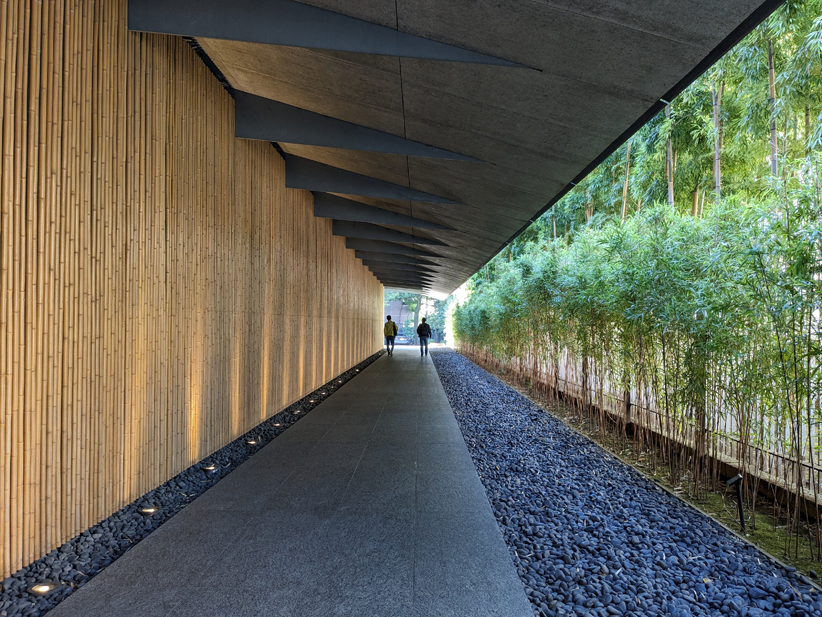
Nezu Museum Garden
I visited the Nezu Museum Garden in Tokyo during November of 2023. It was the museum itself, designed by Kengo Kuma, that drew me to the area, but it was the garden that caught my attention. The land was once the secondary home of entrepreneur and art collector Nezu Kaichirō—now, the garden is open to museum visitors, who can meander along the gentle hills, discover a collection of sculptural objects, or drink tea at one of four teahouses. What I appreciate most about the garden is the way it creates delicate, intimate spaces that become peaceful oases in a bustling area of Tokyo.
– Lucia Song
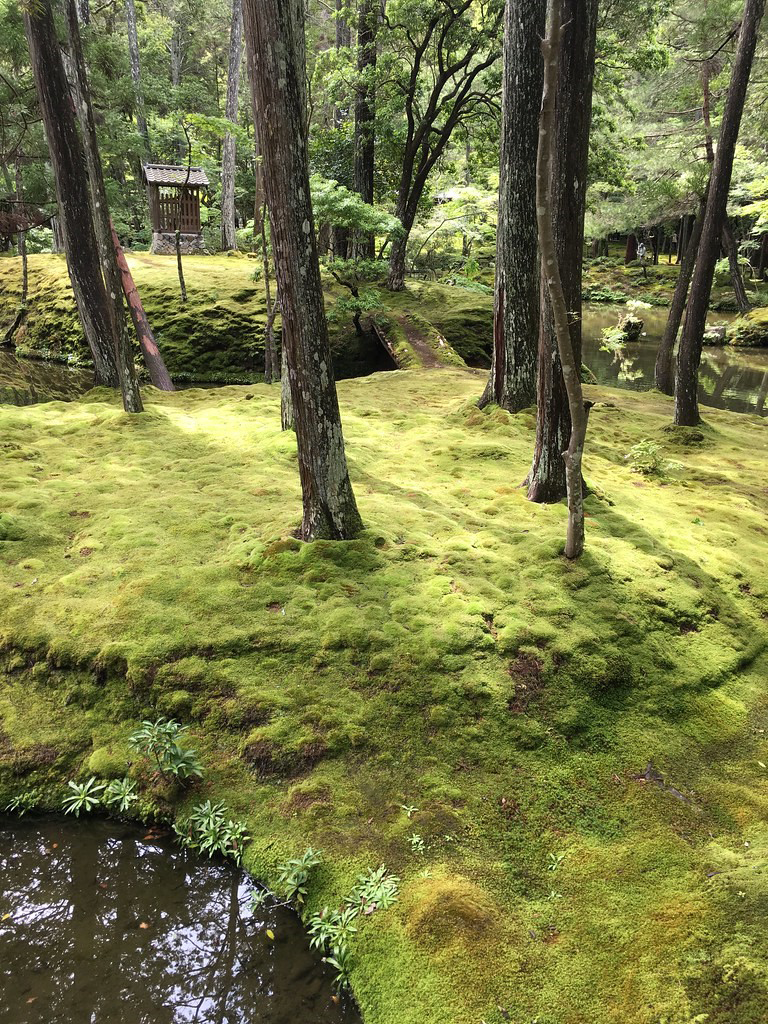
Also known as Saiho-ji Temple, Kokedera Garden is a serene masterpiece tucked away in Kyoto’s outskirts. Its beauty lies not only in its meticulously maintained moss gardens, where velvety carpets spread under towering cedar trees, but also in its profound tranquility. The garden’s design, with its winding paths that lead visitors through various shades of green and subtle gradients of light, fosters a contemplative atmosphere. Each step reveals carefully placed stones, symbolic bridges over shallow streams, and the soft murmur of water features that echo through the air. Kokedera’s unique moss gardens, cultivated over centuries, create a mesmerizing landscape that invites introspection and a deep appreciation for nature’s quiet elegance. Image by crowbot, licensed under CC BY-SA 2.0
– Gary Lee
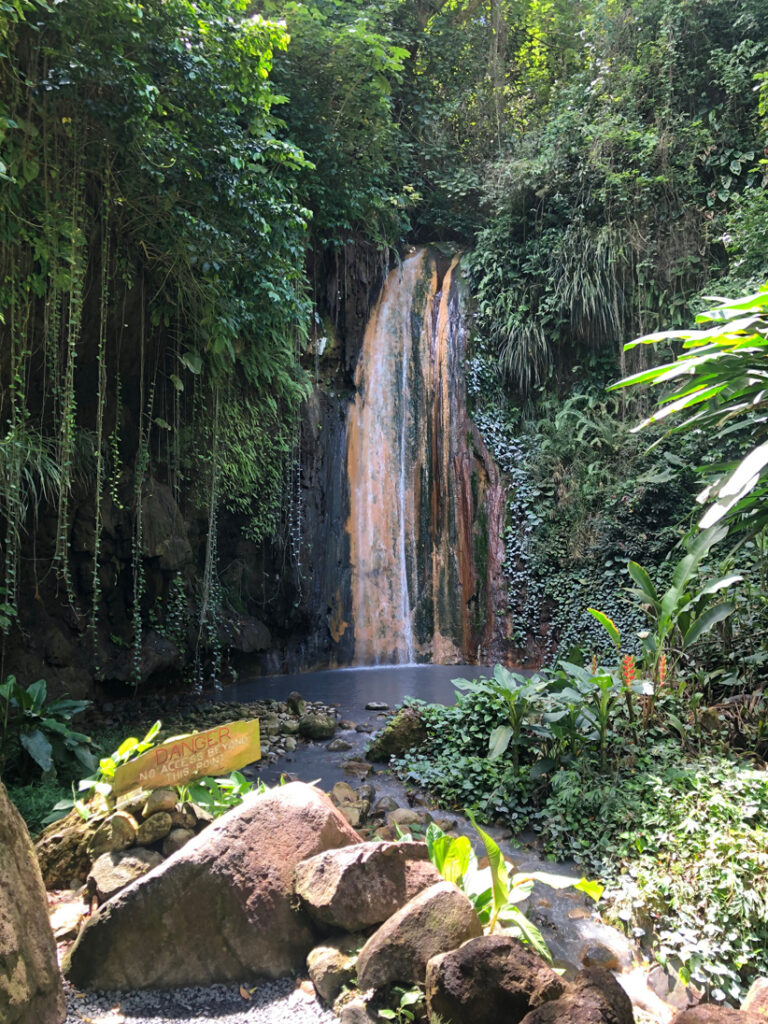
Diamond Falls Botanical Gardens
Diamond Botanical Gardens is located in Soufrière, St. Lucia which is the south-west region of the country. The Botanical Gardens are part of the historical Soufrière Estate which cover 2000 acres of land that were granted to the Devaux family by King Louis XIV in 1713. The Devaux family, who still own the land, developed the formal 6-acre botanical garden in the 1980s. Because St. Lucia is a volcanic island, natural sulfur and mineral springs flow through the garden. The Diamond Fall is a waterfall within the garden that come straight from sulfur springs, and because of the minerals in the water, the rock behind the falls has turned different colors. The gardens sit on a natural gorge, where there is a spectacular variety of tropical plants and flowers, some dating back hundreds of years. I visited Diamond Falls Botanical Gardens in March of 2022. Because I live in NY and this is a tropical area, it was hard not to fall in love with the place. The gardens were peaceful and extremely lush. Standing there, watching the water cascade over a naturally colored rockface was amazing. I appreciate the history of the property and how Soufrière Estate has preserved it, to share with visitors so many years later.
– Annie Valant
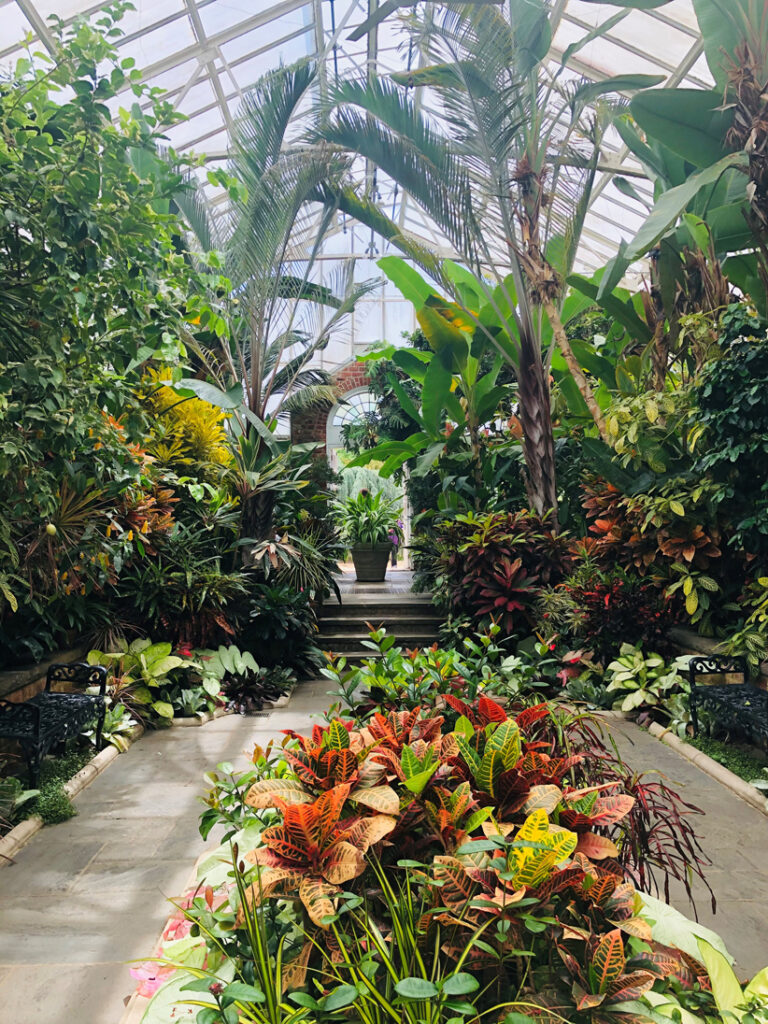
The Planting Fields Arboretum
The Planting Fields Arboretum is a historic State Park in Oyster Bay, NY which includes 409 acres of greenhouses, rolling lawns, gardens, and plant collections. It is the former estate of insurance and railroad executive W.R. Coe during the Gilded Age. My family and I visited the Arboretum during the pandemic, as a way to escape the city, and we enjoyed exploring the many gardens throughout. Each has its own unique characteristics and architectural features. We found the greenhouse in the picture shown to be particularly impressive because it is filled with a beautiful array of exotic plants in varied colors and shapes.
– Karina Kou
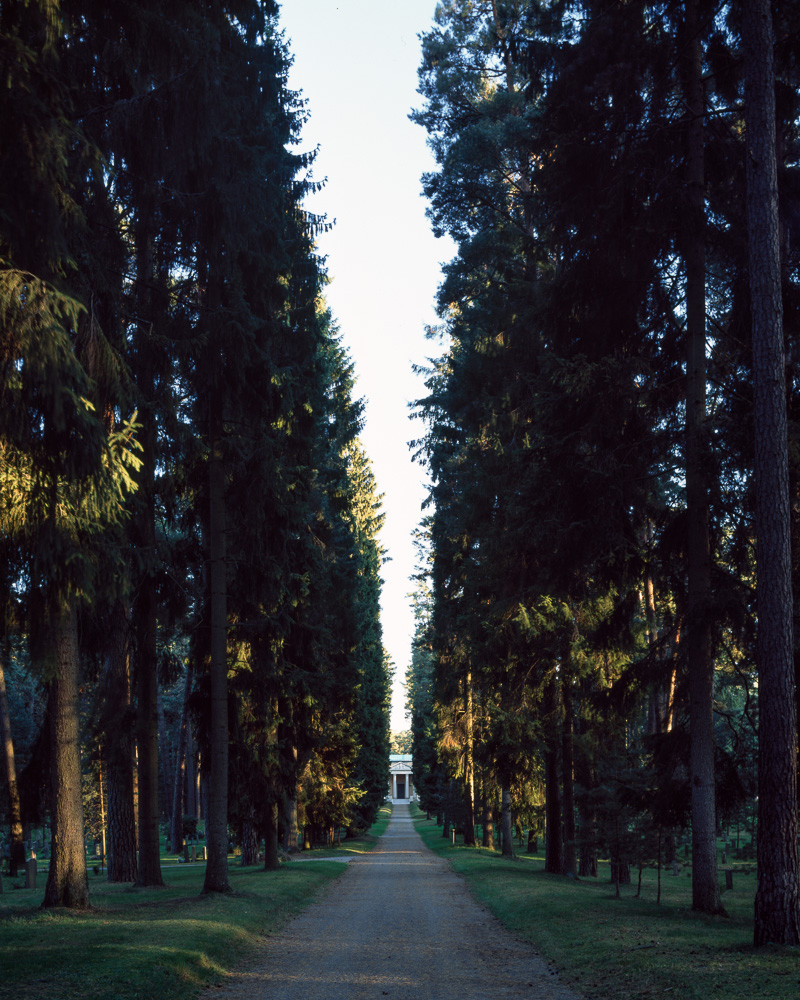
Skogskyrkogården (The Woodland Cemetery)
A personal favorite is Skogskyrkogården, located outside Stockholm, Sweden. It was designed by Gunnar Asplund and Sigurd Lewerentz and built between 1919 and 1940. I had the chance to visit this extraordinary cemetery in person. Exploring its paths, some of which were designed and some of which are natural, I was taken by how the intentions behind the design reveal themselves and the beauty and austerity that co-exist on the grounds. This image is of The Path of Seven Wells, a 900-meter road that leads to the Chapel of Resurrection. Walking in the quiet, underneath the majestic pines, surrounded by the contrasting symbolism of life and death was a surprisingly powerful experience. In 1994, Skogskyrkogården became a UNESCO World Heritage Site and is called “an outstanding example of how architecture and landscaping from our century combine to make a cemetery.” Image by Chen Hao, used with permission. http://chenhao.studio/
– William Clukies